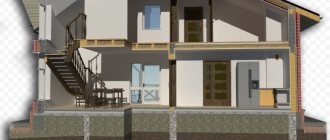Who is recognized as the owner?
Today, all issues related to the privatization of non-residential premises are within the jurisdiction of Federal Law 159 of July 22, 2008.
At the time when the property has not yet undergone the above procedure, it is directly owned by the state, represented by the local municipality.
This means that local governments have the authority to carry out various transactions with property, as well as use it for government needs. Upon completion of the privatization procedure, the owner of the property can become either an individual or a legal entity.
REFERENCE. The law does not prohibit these entities from participating in the privatization process, but it does provide for certain stages of the procedure that must be carried out without fail.
We will look further into how to privatize non-residential premises in an apartment building.
How to privatize non-residential premises?
How does registration of non-residential premises take place? Regardless of who you are, an individual or a legal entity, at the initial stages the principle of going through the procedure is the same for you.
- You must draw up a package of documents before contacting the administrative authority, check it yourself, and draw up an application in accordance with the collected papers. This application is a request to register real estate as your direct property.
- The second step is to submit the application, accompanied by the documents included in the package, to the administrative body of the local government. To do this, you just need to contact the office in the organization.
- Your package of documents must be reviewed no longer than 30 calendar days. The review is carried out by the relevant commission, which is in charge of the alienation of real estate owned by the local government body.
- The submitted application is given either a negative or a positive answer.
- In a situation where the decision on your issue is positive, the municipal authority gives written consent to the transfer of ownership of the property.
- The value of the real estate is determined.
- Payment options are being discussed. You can make the purchase in a lump sum, that is, pay the full specified cost, or pay the amount in installments, using a three-year installment plan. An installment plan agreement is drawn up or the amount established by the municipal authority is paid.
- It is necessary to provide a receipt confirming the fact of payment to the administrative authority.
- Within 60 days from the date of payment of the amount, it is necessary to obtain a resolution created by the administrative body, which highlights the fact of the direct transfer of real estate into the ownership of a citizen or legal entity.
- Next, you need to contact the registration authority with an application and a resolution in order to obtain a certificate of ownership. It will take about 30 days to receive such a document.
- After the specified time has passed, a citizen or representative of a legal entity appears at the registration authority and picks up a certificate of ownership.
During this time, the administration must transfer technical documentation to the newly-minted owner, which includes a cadastral passport, as well as a plan and other papers.
One can trace an incredible similarity with the implementation of privatization of residential premises. However, there are still significant differences, although the step-by-step instructions look monotonous.
What types of real estate can be registered as ownership?
The State Registration Law specifies the following list:
- land plot;
- isolated water body;
- forest;
- perennial planting;
- building, part of a building;
- construction;
- non-residential premises and part of the premises;
- a residential building, including one located on a summer cottage;
- part of a residential building;
- apartment or part of an apartment;
- living space (room in a communal apartment);
- room (in a dormitory);
- garage;
- building of consumer value, outbuilding;
- unfinished construction project;
- enterprise as a property complex.
Registration is carried out by making an entry in the Unified State Register containing four key points:
- subject of law;
- property;
- type of law;
- basis (document establishing the right).
The registration act is confirmed by a certificate of ownership. The provisions of the legislation of the Russian Federation allow citizens to register the following real rights to objects:
- ownership of real estate;
- right of lifelong inheritable ownership (only for land plots);
- right of perpetual use;
- easement.
Documents that need to be prepared and submitted for state registration must comply with accepted requirements. The application for registration of property is drawn up in one copy according to the established template and signed by the applicant. It must be accompanied by documents that are needed for state registration. These are concluded agreements or other legal acts that are the basis for the approval of property rights, formulating the content of transactions (occurrence, transfer of ownership, termination, restrictions). There must be at least two original copies: one remains with the copyright holder, and the second is placed in the registration file. Documents must contain information about the property, the type of right, data of the persons entering into the transaction, and have the signatures of the parties. Documents written illegibly, with additions or corrections, or papers with significant damage will not be accepted. If the document is made up of several sheets, they must be numbered and stitched.
Collection of documents
When privatizing non-residential premises in a residential building, the execution of a package of documents plays a huge role.
IMPORTANT. Pay attention to the correct formation of the package of documents if you are going to prepare them yourself for submission to the administrative authority, as well as the registering authority.
- First of all, you need to attach your passport as a certificate of identity;
- in a situation where we are talking about a legal entity, it is necessary to attach the statutory and constituent documents, as well as the passport of the person who is a representative of the company. An order must be attached indicating that the person has been chosen as a representative;
- A statement is provided indicating your wishes to privatize non-residential premises. Since most likely you have the desire to privatize the property as a result of a long execution of the lease agreement with the administration, you must provide a lease agreement;
- if you decide to privatize real estate without rent, simply by learning about this possibility, then you skip this point;
- you must attach the cadastral papers that you receive from the relevant institution, as well as a request for the service;
- If you submit a package of documents to the registration authority, then a Resolution from the administration on the transfer of the property to your future ownership is added to it.
Registration of non-residential premises on the cadastral register
Since January 1, 2013, Rosreestr has also been involved in cadastral registration of residential and non-residential premises.
As with registering property rights, you can submit an application in person, through a representative, the MFC, the Rosreestr website or by mail.
The application will need to provide the following information::
- Last name, first name and patronymic of the applicant, as well as his passport details.
- The same information about the authorized person, if he is responsible for filling it out.
- Information about the premises that allows it to be accurately identified. These include address, area, location on the floor of a multi-story building, and others like that.
- Date of completion.
It must be accompanied by:
- Passport or passports.
- Technical passport for the apartment.
- Title documents for real estate.
- If necessary, a power of attorney.
If there is no technical passport for the apartment, you will have to apply for it at the BTI.
It indicates the layout, load-bearing walls and other similar information.
Information about all changes must be included in the technical passport (and some of them require prior permission).
After submitting the application, the information specified in it is checked.
Then, if nothing prevents this, the premises are registered and assigned a cadastral number.
A cadastral passport is issued for the property.
Drawing up an application and its sample
We recommend filling out an application at your city administration. However, if you want to save time, or if this is impossible due to some circumstances, we recommend that you stock up on a sample to fill out in advance. If this is not the case, you can find information on the Internet.
- Whenever possible, the document is written in computer font.
- The header of the document indicates the name of the authority to which the documents are submitted.
- It is necessary to indicate the name of your local administration with all contact details.
- The following indicates from whom it is being submitted. Please provide your contact details.
- In the text of the application you must indicate on what basis you are applying for privatization. Perhaps this solution was chosen by you as a result of long-term cooperation under a lease agreement. Or perhaps you accidentally learned about the opportunity to privatize non-residential real estate.
- Then you need to indicate your willingness to pay the cost, as well as your desire to consider your candidacy. A list of attached documents is made, dated and signed.
REFERENCE. There are no clear legislative requirements on what such a document should look like.
In this form, the application is sent to the administration. Although we still recommend that you write such a document in accordance with the sample, we hope that you will avoid serious scrutiny from the receiving authority.
Is a premises privatization agreement necessary?
As such, there is no privatization agreement for the premises. No such document is prepared.
However, the local government authority issues another document in which you can safely contact the registration authority.
This is a decree on the transfer of real estate into the ownership of a specific citizen.
It has the seal of the administrative institution, as well as the signatures of the relevant persons. It is actually an act of privatization.
A certificate of ownership is issued on the basis of this document. As part of such a procedure, avoid drawing up a privatization agreement, because it does not exist.
State duty amount
Currently, the state fee for registration of the privatization procedure is 2,500 rubles. for individuals and 22,000 rubles. for legal entities . You will say nothing at all, and you will be right. You will pay the main cost to the local government, as if under a purchase and sale agreement.
Submission of papers: in person and by proxy. You can submit documents in person or through an authorized representative. Many recommend using the first option, since you still have the opportunity to find out the issues of concern and interest from the providing body - the municipality.
However, if circumstances do not allow personal appearance, you can seek the help of a trusted person who will be happy to help you. To do this, he must have a power of attorney with him, which is certified by a notary.
Completion of the procedure and registration
The procedure ends with you receiving a certificate of ownership. However, in a situation where you have not previously entered into a lease agreement for this real estate, you can play it safe and, together with the employees of the administrative body, draw up a transfer and acceptance certificate, according to which the transfer of non-residential premises into ownership will take place.
This means that the property described matches what you received. At this point, the transaction is completed, you become the full owner of the non-residential real estate building, although you still have to register the non-residential premises.
Training Center Key to Success - additional education in Volgograd
The certificate of registration of ownership does not indicate anything; a note with the encumbrance is made in the register (both electronic and paper) and on the lease agreement. If the premises are for sale, the buyer will be asked whether he is satisfied with having a tenant for such and such a period as an encumbrance.
Listen to good advice - first do the redevelopment, and then settle it through the courts. If you follow the right path, you will never be able to put the redesigned premises into operation because of the firefighters - it will take a lot of money to comply with all their instructions, comparable to all other expenses.
Refusal to privatize
The administrative body has every right to refuse you to carry out a transaction in a situation where you are not suitable for the role of a person who has the opportunity to privatize. So, perhaps you do not have enough money to purchase it and you are lowering the price, or perhaps you do not have the necessary papers.
IMPORTANT. Only citizens of our country have the right to privatize real estate, therefore, if it turns out that you are a citizen of another state, you will be denied.
An incorrectly drawn up application, as well as incompletely collected documents for ownership of non-residential premises are grounds for refusal.
The same applies to the registration authority. A lack of documentation or the presence of an incorrectly drawn up application becomes the basis for starting the procedure from scratch.
Document on the ownership of non-residential premises
This is the case: I bought non-residential premises of an apartment building by concluding an assignment of rights under the Agreement of Participation in Shared Construction. After which I now need to obtain ownership of this premises, but when submitting documents to Rosreestr, I was refused, allegedly the original agreement for participation in shared construction was not registered in the Unified State Register of Real Estate. Please tell me what to do in this case? If the share participation agreement was not registered, then the assignment agreement under which you bought the premises could not be registered. If the assignment agreement is registered, then Rosreestr is probably mistaken in that the DDU has not passed state registration. If the assignment is not registered and the DDU is not registered, then the first thing you need to do is contact the developer and report your problem.
Certificate of ownership
A certificate of ownership is a document drawn up on a special form. This document certifies your right to own, use, and dispose of real estate in accordance with your wishes. This means that only you have the right to carry out various transactions and actions with real estate. The registration authority is authorized to issue such a document.
Only after you have received a resolution from the administration and registered with the registration authority will you receive this certificate within 30 days.
Ownership rights in cases of gift, inheritance or privatization
Depending on the type of real estate and the legal basis for receiving or transferring your own property, the procedure for registering an apartment, private house or other real estate changes. The main problem most often lies in the difficulty of obtaining additional documents required during registration. You simply cannot do without a reliable lawyer and specialist in the field of registration of apartments and houses. Otherwise, you risk delaying the registration process for many months, and in complex cases, litigation or problems with determining shares in common real estate, you can lose years.
Lawyers from the Star-Service registration and cadastre center will provide full legal support for any real estate transactions (apartments, private houses, non-residential premises, land plots). Cooperation with us saves your time and makes the procedure for registering ownership of an apartment or house simple and clear.









